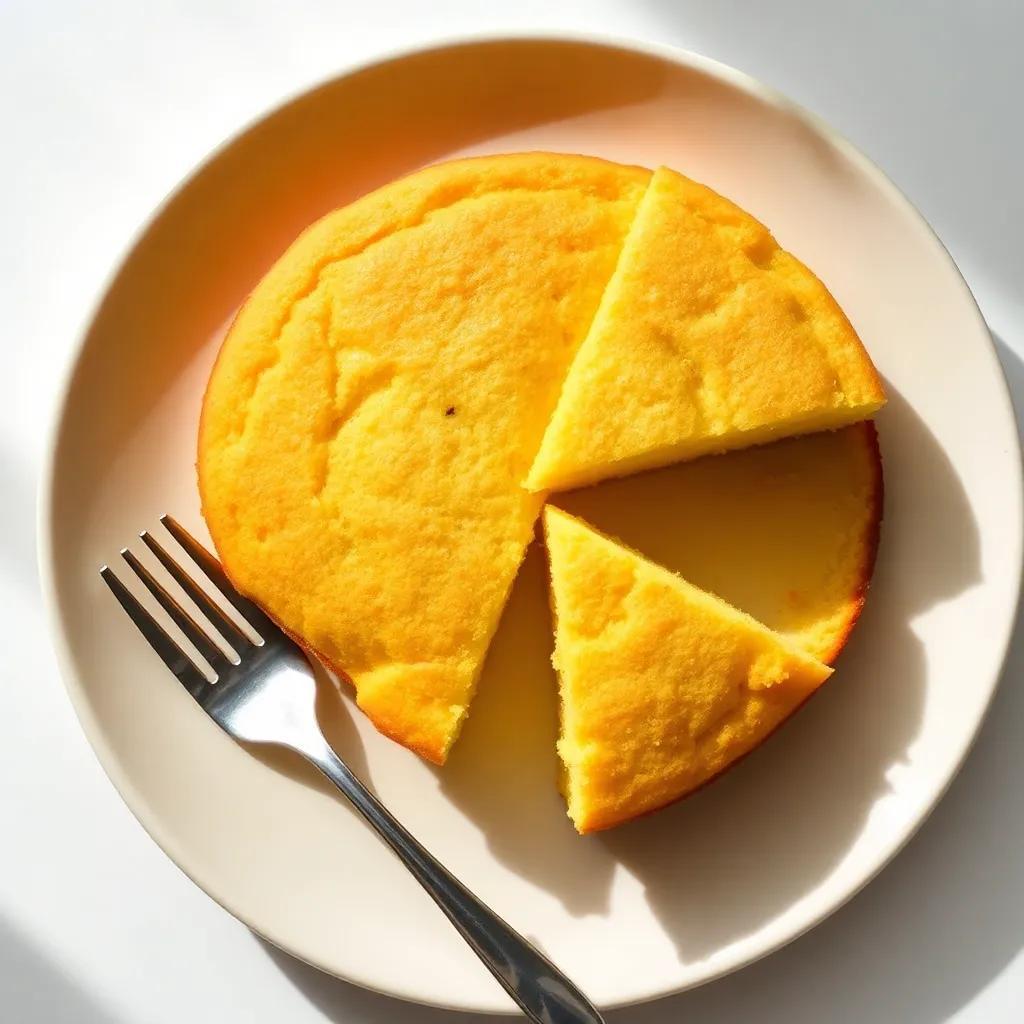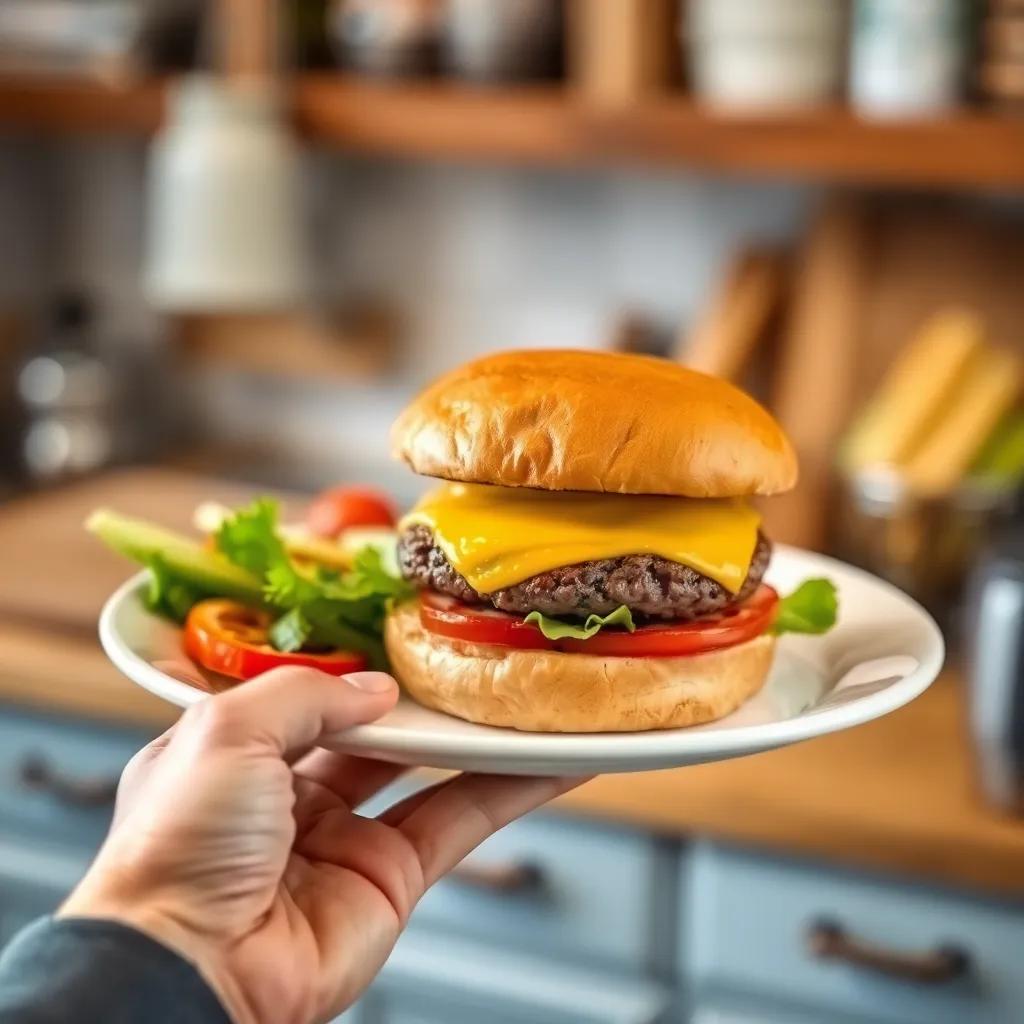Creamy Classic Clam Chowder Recipe: Easy, Cozy & Delicious
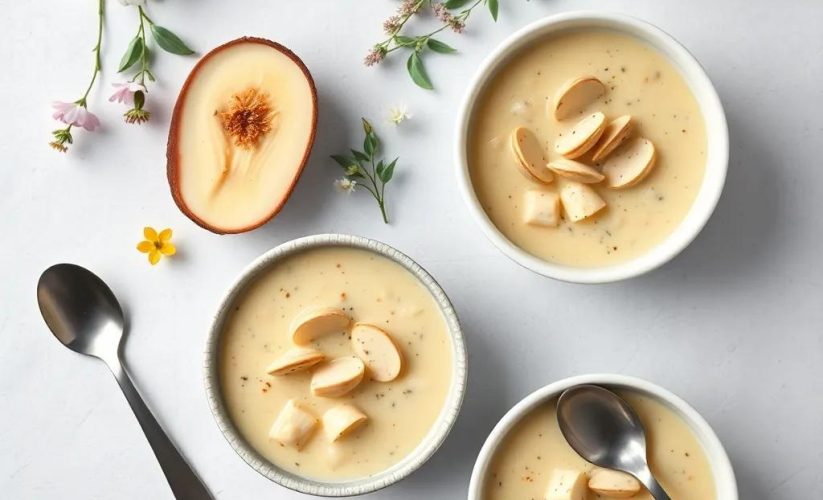
Creamy Classic Clam Chowder Recipe: Easy, Cozy & Delicious
🌍 Cuisine: American
⚙️ Difficulty: Easy
Ingredients
Nutrition Facts
350
Instructions
- In a large soup pot or Dutch oven, cook the chopped bacon over medium heat until crisp. Remove bacon with a slotted spoon and set aside, leaving bacon fat in the pot.
- Add butter to the bacon fat and sauté diced onions and celery until softened and translucent, about 5 minutes.
- Sprinkle the flour over the vegetables and stir constantly for 2 minutes to create a roux, which will thicken the chowder.
- Slowly pour in the clam juice while stirring to avoid lumps, then add the diced potatoes and fresh thyme. Bring to a simmer and cook until potatoes are tender, about 15 minutes.
- Stir in half-and-half and milk, continuing to cook on low heat but do not boil to prevent curdling.
- Add the chopped clams and cooked bacon back to the pot. Heat through gently for 5 minutes.
- Season with salt and freshly ground black pepper to taste.
- Remove from heat and let sit for a few minutes to thicken further and meld flavors.
- Ladle the chowder into bowls and garnish with chopped fresh parsley if desired. Serve hot with oyster crackers or crusty bread.
Serving Suggestions
- Serve with warm oyster crackers or crusty sourdough bread to soak up the creamy broth.
- Pair with a crisp green salad for a balanced meal.
- Top with extra crispy bacon bits for added texture and flavor.
- Add a sprinkle of fresh chives or green onions as a fresh garnish.
- Offer a side of steamed clams or garlic breadsticks for a hearty seafood feast.
- Serve in bread bowls for a cozy presentation.
- Enjoy with a chilled glass of Chardonnay or a light beer.
Table of Contents

Intro
There’s something undeniably comforting about a steaming bowl of clam chowder on a chilly day, and this Creamy Classic Clam Chowder Recipe delivers exactly that — warmth, richness, and that subtle ocean breeze in every spoonful. What makes this recipe truly special is how effortlessly it balances hearty textures and delicate flavors, making it a perfect go-to whether you’re looking for a cozy weeknight meal or an impressive dish to share with friends and family.
Despite its luxurious creaminess, it’s surprisingly simple to make, requiring just basic kitchen staples and straightforward steps that even beginner cooks can follow with confidence. Preparing this chowder invites you into a slow, soothing cooking rhythm that transforms humble ingredients into something satisfying and timeless. The result is a bowl that feels like a warm embrace—perfect for curling up with on a rainy afternoon or serving at your next casual gathering.
This classic chowder’s rich yet approachable profile also makes it incredibly versatile: it pairs beautifully with crisp salads for a light lunch, or crusty bread for a filling dinner. Whether it’s a special occasion or just a day that calls for comfort food, this chowder fits right in, bringing a touch of seaside charm and homestyle goodness to your table.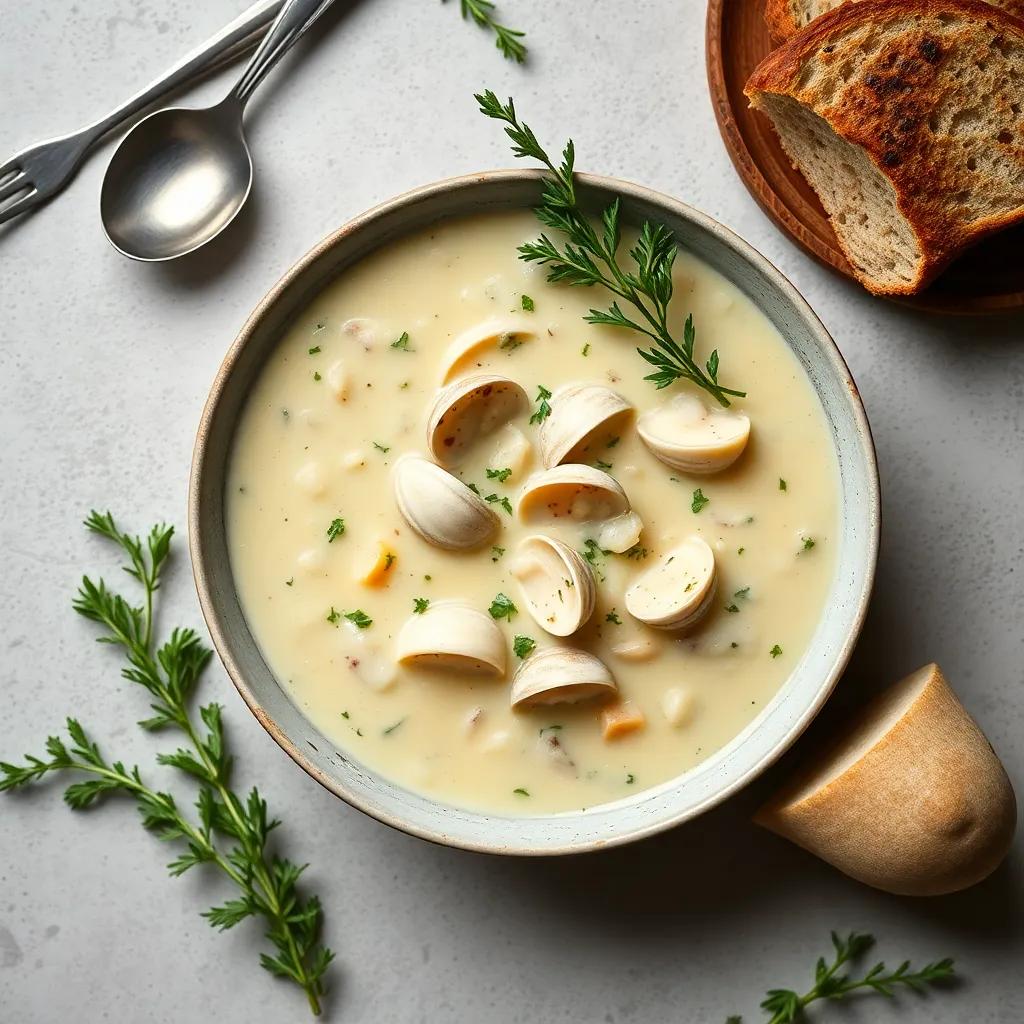
Ingredient Notes
One of the stars of this creamy clam chowder is the clam juice, which brings that unmistakable briny depth essential to its flavor. When selecting clam juice, opt for a high-quality, natural variety without added preservatives or excessive sodium. If you can find fresh clam juice from a trusted fishmonger or local seafood market, it will elevate the chowder with a fresher, more vibrant ocean essence. In a pinch, bottled or canned clam juice works well, but taste and salt levels may vary—adjust seasonings accordingly.
The canned chopped clams are another cornerstone ingredient that provide tender bites of seafood throughout the chowder. Look for clams packed in their own juice rather than brine or salted water for a cleaner, sweeter taste. If you prefer a heartier texture or want to boost freshness, consider using fresh clams steamed and chopped yourself. Just be sure to reserve and strain the cooking liquid to use as extra clam juice in your chowder.
Potatoes are essential not only for bulk but also for adding a subtle creaminess as they cook down. Choosing starchy varieties like Russets or Yukon Golds is best—they break down slightly to thicken the chowder gently without disintegrating completely. Be mindful to dice them uniformly so they cook evenly and provide that perfect balance of soft and tender texture in each spoonful.
Lastly, the choice of dairy—half-and-half, heavy cream, or a combination with whole milk—is key to achieving the chowder’s signature silky richness. Heavy cream creates a luxuriously thick mouthfeel, but if you want a lighter version, mixing in whole milk or half-and-half strikes a lovely balance. For non-dairy alternatives, full-fat coconut milk or cashew cream can mimic the creaminess, though they will subtly shift the flavor profile.
Together, these ingredients form the heart of this classic clam chowder, each one contributing layers of flavor and texture that make every bowl comforting, satisfying, and utterly delicious.
Tips & Variations
Mastering the art of clam chowder is as much about technique and personal touches as it is about ingredients. Here are some tips and variations to elevate your creamy classic clam chowder and tailor it to your taste or dietary needs:
- Perfecting the Texture: For a chowder that’s silky yet hearty, be mindful of your roux. Cook the flour just enough to remove its raw taste, but avoid browning it, which can darken the chowder’s color and alter its delicate flavor. Stir constantly while adding the clam juice to prevent lumps and ensure a smooth base.
- Adjusting Creaminess & Richness: To lighten the chowder, swap half the heavy cream for whole milk or use all half-and-half. For an ultra-rich version, add a splash of brandy or dry sherry just before serving—this adds depth without overpowering the clam’s brightness. Vegans or lactose-intolerant cooks might try creamy coconut milk or cashew cream in place of dairy, although these will introduce subtle flavor shifts worth experimenting with.
- Clam Variations: While canned clams are convenient and flavorful, fresh littlenecks or Manila clams make a superb upgrade. Steam them until just opened, then chop and add their cooking liquid (strained) to replace or supplement your clam juice for a fresh, briny punch. If fresh shellfish aren’t available, smoked clams add an intriguing umami twist to the chowder.
- Vegetable Swaps & Add-ins: Traditional celery and onion serve as the aromatic backbone, but feel free to experiment with finely diced leeks or shallots for milder sweetness. For extra color and subtle earthiness, toss in diced carrots or a handful of fresh corn kernels during the potato simmer. A pinch of smoked paprika or a dash of hot sauce can gently nudge the chowder toward a smoky or spicy profile, depending on your mood.
- Thickening Options: If you prefer a thicker chowder, try mashing some of the cooked potatoes in the pot before adding clams and cream—this naturally thickens without extra flour. Alternatively, a small amount of instant potato flakes stirred in toward the end can boost body without changing the flavor.
- Low-Sodium & Dietary Considerations: To reduce sodium, choose low-sodium clam juice or dilute regular clam juice with water and adjust salt to taste. Use turkey bacon or omit bacon entirely for a lighter, pork-free option; sauté vegetables in olive oil or vegan butter instead to maintain flavor. For gluten-free adaptations, substitute all-purpose flour with a gluten-free blend or use cornstarch slurry to thicken the chowder—just add it slowly and stir until thickened.
- Garnishing Flair: A sprinkle of fresh green onions, chives, or a few drops of lemon juice added at the table can brighten the rich chowder beautifully. Crispy bacon crumbles or smoked paprika also add texture and depth right before serving.
- Serving Style: For an inviting presentation, consider serving chowder in hollowed-out sourdough bread bowls or topped with toasted garlic breadcrumbs. This adds an extra layer of cozy charm and makes your meal feel special without extra fuss.
By keeping these tips and twists in mind, you can easily customize this creamy classic clam chowder to suit your preferences, make it a weeknight staple, or elevate it into an impressive dish that’s uniquely yours.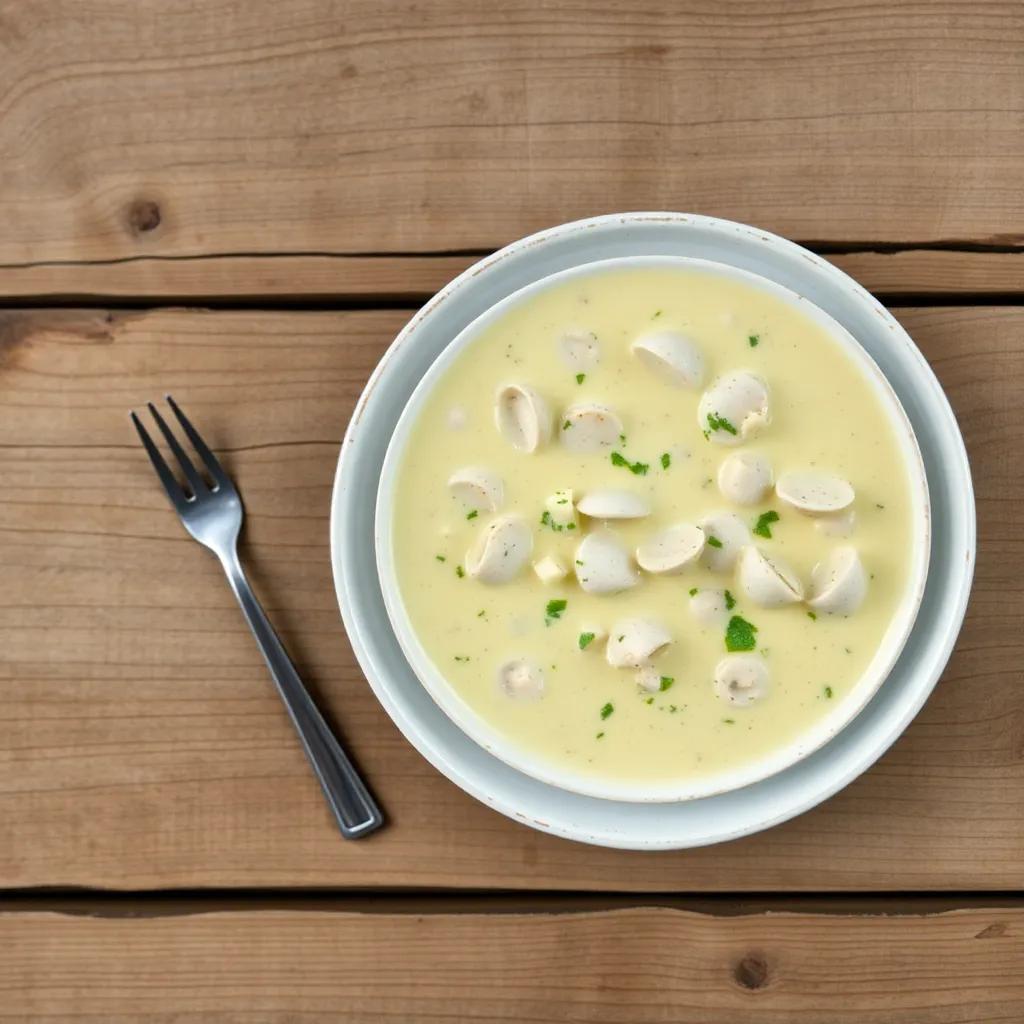
Leftovers & Storage
When it comes to storing your Creamy Classic Clam Chowder, proper handling ensures you can enjoy its comforting flavors again without sacrificing texture or safety. Because this chowder contains dairy, potatoes, and seafood, timely refrigeration is crucial to maintain freshness and prevent any unpleasant souring.
Refrigeration:
Allow the chowder to cool down to room temperature—ideally within 1 to 2 hours after cooking—before transferring it to airtight containers. Glass or BPA-free plastic containers with tight-fitting lids work best to preserve flavor and prevent leakage. Store your chowder in the refrigerator for up to 3 to 4 days. Give it a quick stir before reheating to re-incorporate any separated cream or broth.
Freezing:
Clam chowder can be frozen, but it’s best handled carefully since the creamy base may sometimes separate or become grainy after thawing. For optimal results, portion the chowder into freezer-safe containers or heavy-duty freezer bags, leaving some headspace for expansion. Label each container with the date—clam chowder is best enjoyed within 2 months of freezing. When thawing, move it to the refrigerator overnight rather than using a microwave to defrost, as slow thawing reduces texture changes.
Reheating Tips:
Reheat gently on the stovetop over low to medium heat, stirring frequently to prevent the dairy from curdling. Avoid boiling the chowder—this can cause the cream to break and the potatoes to become mushy. If the chowder thickens too much after refrigeration, stir in a splash of milk, half-and-half, or clam juice to loosen it slightly while warming.
Meal Prep & Packing:
This chowder is an excellent candidate for meal prepping, providing ready-to-heat comfort when time is tight. Store individual portions in microwave-safe containers if you want quick lunches or dinners at work or school. Keep an ice pack handy during transport to maintain a safe temperature. If packing for a picnic or potluck, use insulated containers and consume within a few hours to ensure food safety.
By following these guidelines, your leftover clam chowder will stay creamy, fresh, and just as cozy as the moment it was first served—ready to warm you up on another chilly day or satisfy unexpected guests with minimal effort.
Behind the Recipe
Clam chowder holds a special place in American culinary history, deeply rooted in the coastal traditions of New England. This creamy classic is more than just a soup—it’s a symbol of community, resilience, and simplicity. Originally fashioned by fishermen and coastal families who sought to turn fresh clams and humble pantry staples into a nourishing meal, clam chowder reflects the resourcefulness of those living by the sea.
The recipe we share here embraces that heritage while adapting to modern kitchens. Including bacon and fresh thyme alongside potatoes and clams pays homage to the rustic flavors that have long defined this dish. The slow simmering process mirrors the old-fashioned methods that coaxed maximum flavor from minimal ingredients, creating a chowder that’s as comforting as it is timeless.
On a personal level, this recipe evokes memories of crisp ocean breezes and cozy gatherings around a steaming pot after a day by the shore. It’s the kind of food that invites conversation and warmth, a reminder that good cooking often thrives in simplicity and shared moments. Whether you grew up near the coast or are discovering clam chowder for the first time, this creamy classic offers a taste of tradition—an enduring comfort that connects past and present with every bowlful.
FAQ
Can I use canned clams instead of fresh clams for this chowder?
Is it possible to make this chowder dairy-free or vegan?
How can I store leftover clam chowder, and how long will it keep?
Can I freeze clam chowder, and what’s the best way to thaw it?
What’s a good substitute if I don’t have fresh thyme or bay leaves?
Can I add other seafood or veggies to this clam chowder?
How do I thicken the chowder if it turns out too watery?
Try It Yourself
There’s something timeless about a bowl of creamy classic clam chowder—warm, comforting, and full of rich, savory flavors that feel like a gentle hug on a chilly day. This easy recipe brings that cozy magic right into your kitchen, letting you enjoy a taste of tradition without any fuss.
If you give this chowder a try, we’d love to hear how it turned out! Feel free to leave a comment, share your rating, or tell us about your own special twist on the recipe. After all, the best dishes are those made with a little personal love and creativity. Happy cooking!










